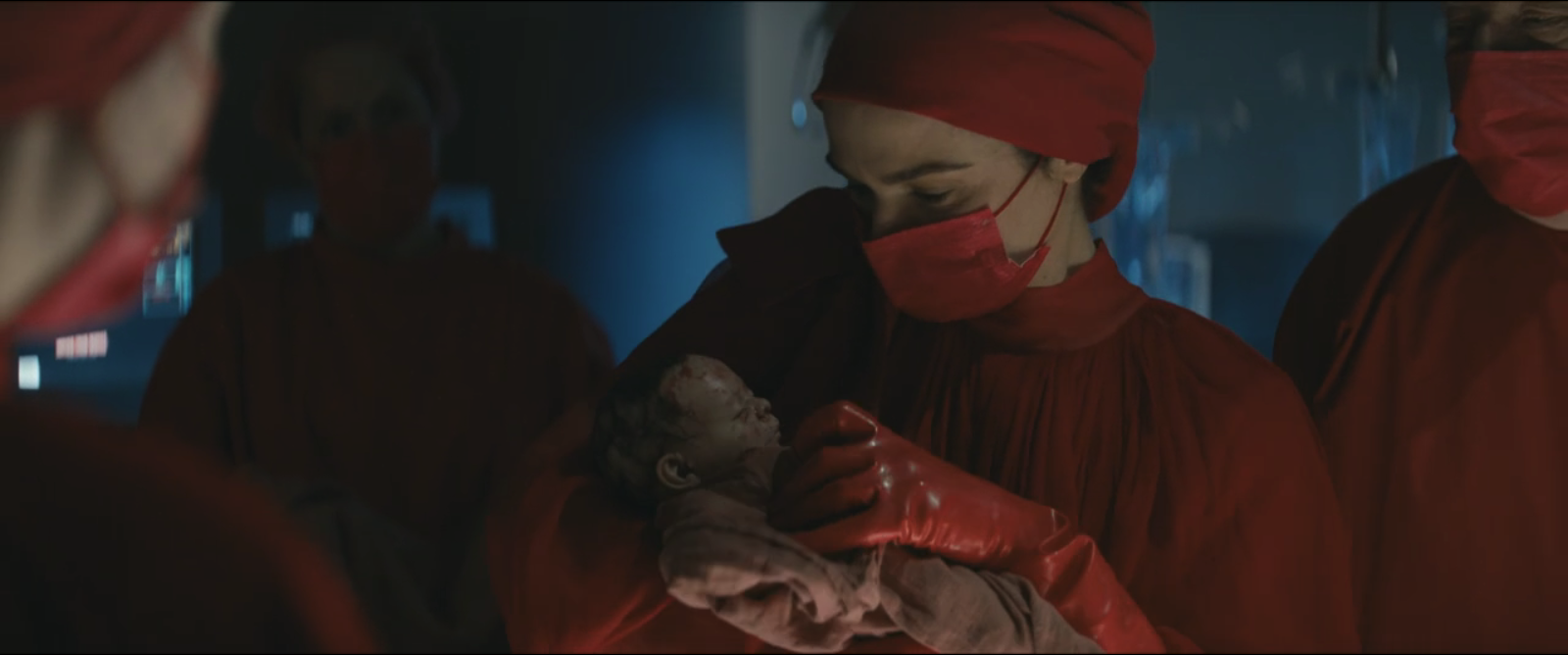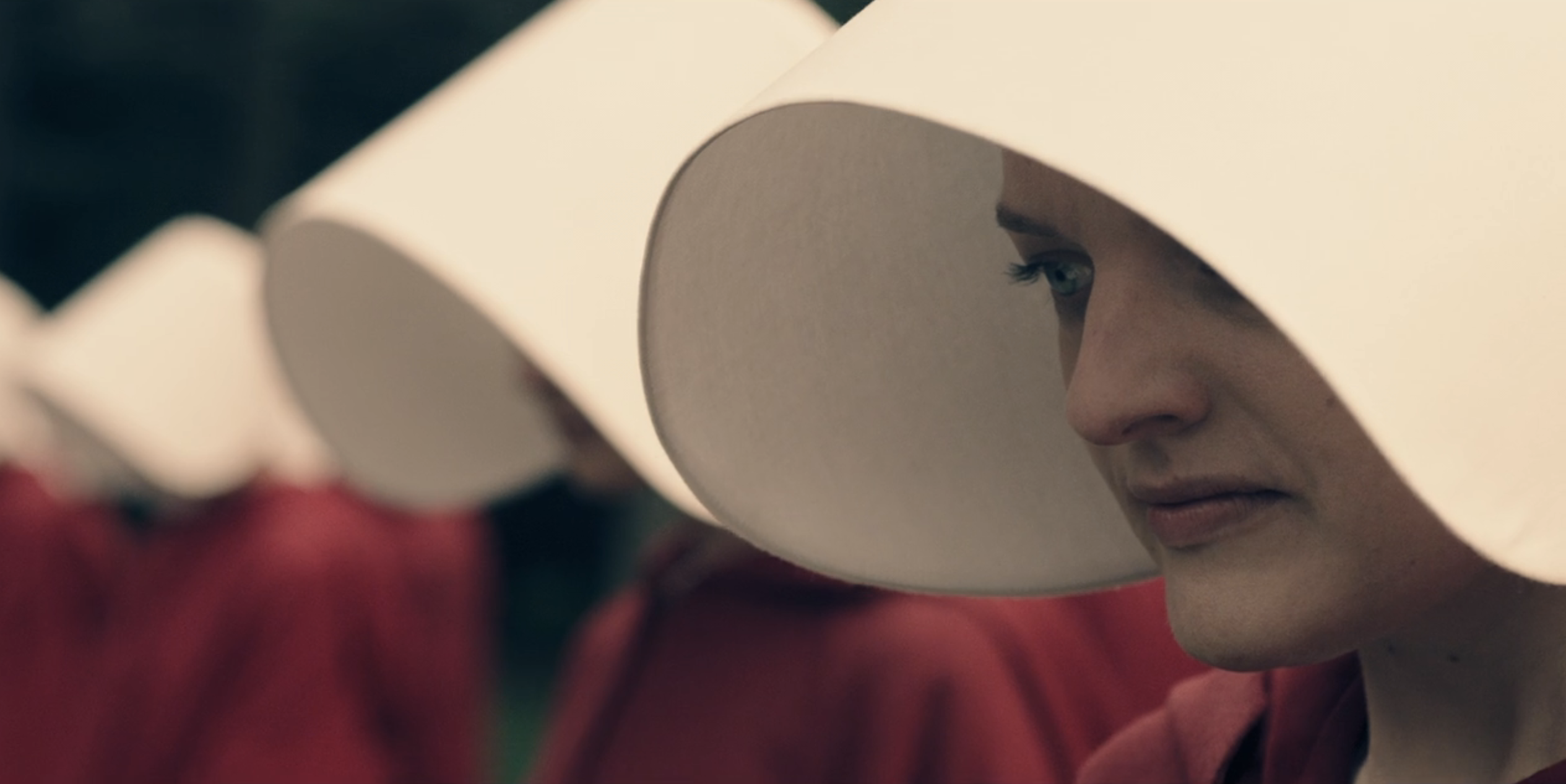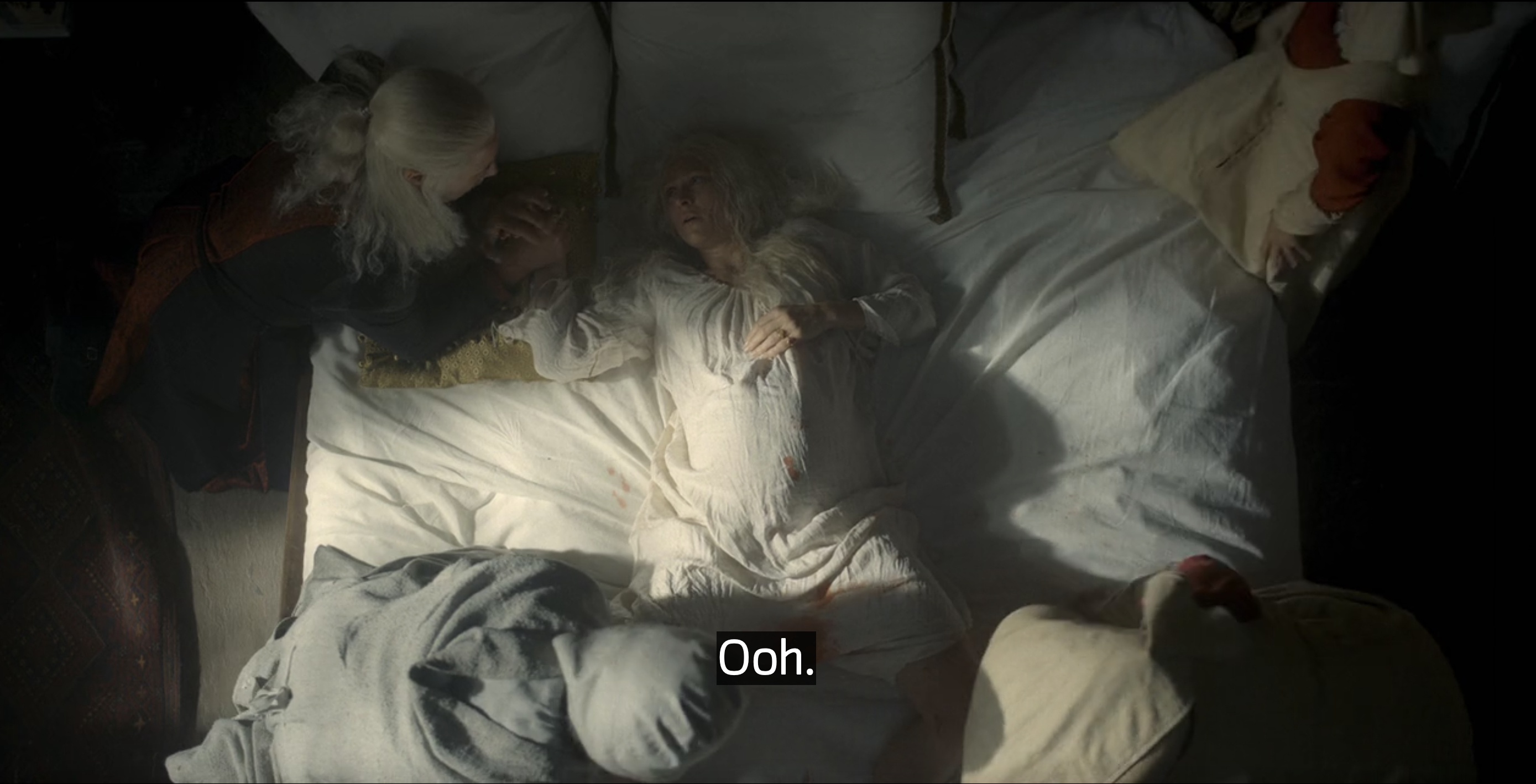Over*Flow: “Birth is Violent”: Television’s Response to Post-Roe Reproductive Politics
Reut Odinak / Boston University

“Birth is violent” could be considered the tagline for the television miniseries Dead Ringers (Amazon Prime, 2023). It follows the Mantle twins, an obstetrician/gynecological duo looking to open a birthing center and, as Beverly Mantle proclaims, “change the way women give birth.” This series similarly wants to change how we see women give birth.
The first episode introduces the Mantles’ day-to-day lives with a montage of women delivering babies. Amid encouraging yells of “push” and the sounds of spattering, close-ups of women’s faces contorted in pain appear as they grunt, groan, and gasp with effort. As the cuts between close-ups quicken and the music pulses faster in the background, shots of babies being pulled out from between women’s legs appear, putting the gruesome reality of giving birth on display. Then, a gloved hand performs a C-section, cutting through the flesh of a protruding stomach. Blood gushes out. Blood drips onto white sneakers. Blood coats a baby’s arm. The montage ends with the sound of a baby crying.
According to showrunner Alice Birch, “We wanted the births to feel real and for those patients to feel like real women who walk in and out of clinics today.” This montage certainly delivers. With the anniversary of Dobbs having passed over the summer, how have television depictions of reproduction evolved? What does this evolution suggest about the politics of reproduction, including abortion and childbirth, in a post-Roe context? In what should have been the fiftieth anniversary of Roe, offering the emotional, physical, and often grisly truth of what it means to create life has become imperative and current television series seem to agree, asking viewers to face the ramifications of forbidding women from making decisions over their bodies.
As feminist television studies scholars have shown, television representations of the reproductive body, including pregnancy (Dow 1996, Davies and Smith 1998, Feasey 2012) and abortion (D’Acci 1999, Hendershot 2009) have historically been fraught. Series avoided such topics, perceiving them as suggestive and alienating. In the 1950s post-war television boom, programs could not portray pregnancy, let alone utter the word. That is until I Love Lucy (CBS, 1951-1957) incorporated Lucille Ball’s real-life pregnancy. According to feminist media scholars Jude Davies and Carol Smith, the series mitigated CBS executives’ fears that it would be “vulgar” by showing motherhood working in the “American” way (44).
Twenty years later, Maude Findlay finds herself pregnant at 47 and decides to get an abortion in the two-part episode, “Maude’s Dilemma,” before Roe v. Wade had even passed. Maude (CBS, 1972-1978) brought a controversial issue to many American households, but as feminist media scholar Heather Hendershot writes, the episode did not present “radical feminist discourse” (210). Instead, it offered “the rhetoric of liberal feminism” (Hendershot 210). The series confronted abortion head-on but offered a palatable narrative to audiences, allowing the debate to continue over the abstract, immaterial, symbolic ideas of “choice” and “life” rather than radical ideas about reproductive bodies and rights.
The 1990s and 2000s saw the continued rise of the anti-abortion movement, and as abortion became women’s most contested right, “pop culture became ever more reluctant to present it straightforwardly” (Zeisler 143). Typical narratives consist of characters agonizing over the decision only to find that they miscarried early in the pregnancy, or go through with the procedure, and are subsequently haunted by it or punished by being immediately killed off (Zeisler 143). At the same time, the early 2000s saw the rise of delivery scenes. Childbirth became a ubiquitous trope where sweaty women sit in stirrups and yell in pain before their baby emerges. Networks and cable channels sanitized every element of pregnancy, from conception to abortion or birth, ultimately distorting the terms on which reproductive politics hinge.
As women’s reproductive control has once again become their most “contested right,” contemporary television series depict the consequences of restricting bodily autonomy and forcing women to give birth. Far from how television handled reproduction in the past, these series no longer sanitize the bodily or emotional horror accompanying the reproductive process, offering depictions seemingly inspired by radical feminist Shulamith Firestone’s proclamation that pregnancy is “barbaric.”

The Handmaid’s Tale (Hulu, 2017–), a dystopian narrative of speculative fiction, was one of the first major series to react to the regressive state of reproductive rights in the U.S. It began filming when the infamous Access Hollywood Tape of Trump exclaiming, “Grab them by the pussy” became public and started airing in April of 2017 as the new administration began taking extreme measures to control reproductive bodies and as the #MeToo movement disrupted the status quo. The series emerged when only fears of Roe being potentially overturned circulated but still functioned as an allegory to explore the profound trauma of patriarchal systems governing reproductive bodies, reinforcing the inhumanity of forcing women to give birth.
In August of 2022, House of the Dragon (HBO, 2022–), the Game of Thrones (HBO, 2011-2019) prequel, premiered and presented a controversial birth scene that sparked outrage amongst viewers still reeling from the Dobbs decision overturning Roe. The scene begins with Queen Aemma who is giving birth and in breech.
The maesters tell her husband, King Viserys, “Sometimes during a difficult birth, the father must make an impossible choice,” which in this case is a medieval C-section. Queen Aemma has no agency over what happens to her body or a decision that may result in her death. King Viserys allows the C-section to move forward. Shot from above, four midwives drag Aemma down the bed and strap her down limb by limb, binding her hands in cloth. Screaming and yelling in pain and fear, she struggles against them. The master performs a graphic C-section that results in a stillborn child and her death. Queen Aemma’s lifeless body remains with blood spread all over the bed. The series depicts this birth scene as violating and violent, reflecting what Queen Aemma tells her daughter before this scene, “The childbed is our battlefield.”

Nearly a year after the Dobbs decision, Dead Ringers is one of the most recent series to fully explore the bodily realities of reproduction and the horrific history of gynecology. In the fifth episode, the Mantle twins meet a doctor named Marion. His name refers to J. Marion Sims, often called the “Father of Gynecology.” Marion tells the twins the story of a doctor in the mid-1800s who “practiced” on one patient and developed a way to treat her fistula. This is a short, sanitized history of one of J. Marion Sims’ patients. A later dream sequence reveals this story’s racist truth. Viewers learn that the “patient” was an enslaved 17-year-old girl, Anarcha, who suffered a fistula after delivering a stillborn. Sims operated on her over 30 times in five years without anesthetic.
While considered the “Father of Gynecology” and honored with statues, medals, and medical tools in his name, the only recorded information about Anarcha comes from Sims’ records. American gynecology developed due to the medicalized torture of enslaved black women, like Anarcha, and other non-consenting “patients.” The series moves beyond the barbarism of reproduction, pointing out that the gynecology field and our knowledge of the reproductive body resulted from brutal and inhumane acts by men on women, specifically black women. The series places reproduction’s labor, pain, and barbarism, including its history, in plain view for audiences.

Without the constitutional guarantee to abortion, television series like The Handmaid’s Tale, House of the Dragon, and Dead Ringers confront viewers with the consequences of taking away bodily autonomy and the reality of forcing people into giving birth. More recently, series like Silo (Apple TV, 2023) continue asking questions about the ramifications of controlling reproduction and the reproductive persons we sacrifice. While the debate over reproductive autonomy rages on in our post-Roe world, television has responded by showing how birth is violent, controlling reproductive bodies is cruel, and forcing people into giving birth is barbaric.
Image Credits:
- Dr. Mantle (Rachel Weisz) delivering a baby in Amazon Prime’s Dead Ringers (author’s screen grab)
- June Osborne (Elisabeth Moss) in The Handmaid’s Tale (author’s screen grab)
- Queen Aemma (Sian Brooke) is in breech in House of the Dragon (author’s screen grab)
- Anarcha (Brittany Bradford) exposing the true history of gynecology in Dead Ringers (author’s screen grab)
D’Acci, Julie. “Leading up to Roe v. Wade Television Documentaries in the Abortion Debate.” Television, History, and American Culture: Feminist Critical Essays, edited by Mary Beth Haralovich and Lauren Rabinovitz, Duke University Press, 1999, 120-144.
Davies, Jude, and Carol Smith. “Gender, and the American Mother: Political Speech and the Maternity Episodes of I Love Lucy and Murphy Brown.” American Studies, vol. 39, no. 2, 1998, 33–63.
Dow, Bonnie. Prime-Time Feminism: Television, Media Culture, and the Women’s Movement Since 1970. University of Pennsylvania Press, 1996.
Feasey, Rebecca. From Happy Homemaker to Desperate Housewives: Motherhood and Popular Television. Anthem Press, 2012.
Firestone, Shulamith. The Dialectic of Sex: The Case for Feminist Revolution. Paladin, 1973.
“Five.” Dead Ringers, season 1, episode 1, Amazon Prime, 21 April 2023.
Hendershot, Heather. “You Know How it is With Nuns: Religion and Television’s Sacred/Secular Fetuses.” Small Screen, Big Picture: Television And Lived Religion, edited by Diane Winston, Baylor University Press, 2009, 201-233.
“One.” Dead Ringers, season 1, episode 1, Amazon Prime, 21 April 2023.
“The Heirs of the Dragon.” House Of The Dragon, season 1, episode 1, HBO, 21 August 2022.
Zeisler, Andi. Feminism and Pop Culture. Seal Press, 2008.